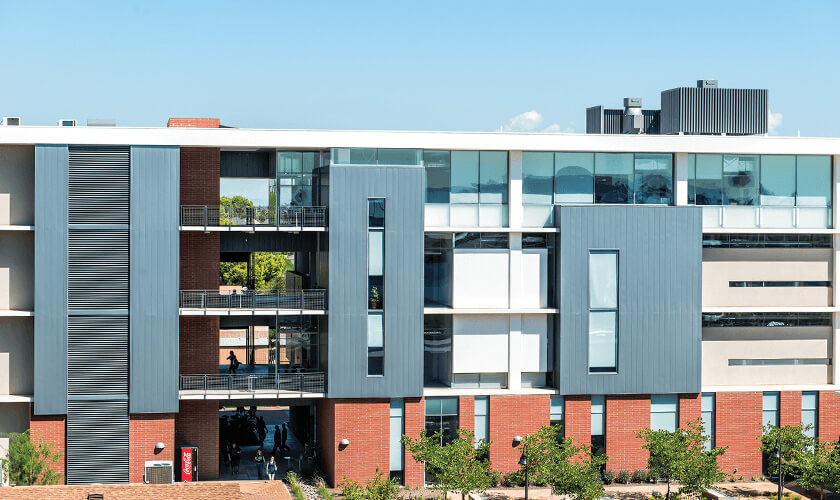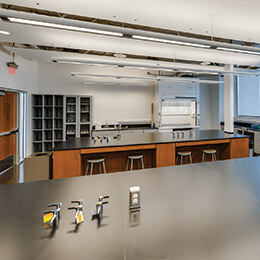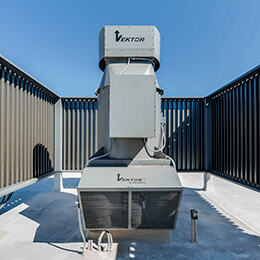Project Profile: Grand Canyon University College of Arts and Science Building

The Challenge
• Safely expel exhaust fumes from laboratories high above the surrounding dormitories
• Invest in an energy efficient laboratory exhaust system to reduce energy costs enough to pay back the entire system cost in two to three years
Construction of a new, four-story College of Arts and Science building with state-of-the-art science and nursing laboratories began in November 2011 on the campus of Grand Canyon University in central Phoenix, Arizona.
The project was completed in time for the fall 2012 classes. Grand Canyon University was founded in 1949 as a premier Christian college, and now serves over 6,000 students. The fourth floor of the new building includes six science laboratories with fume hoods and two simulation and skills laboratories without fume hoods.
The building is located in a nonindustrial area with nearby dormitories and other housing. Effective fume dispersion high above the building that prevents reentrainment of the fumes into nearby fresh air intakes in residential buildings was essential.
Greenheck’s Solution
• Three Vektor®-HS Laboratory Exhaust Systems
Due to varying classroom sizes and laboratory activities throughout the day in the new College of Arts and Sciences building, Grand Canyon University officials wanted a laboratory exhaust system that would be both effective at removing laboratory fumes and cost-effective to operate. The solution was Greenheck's Vektor®-HS laboratory exhaust system, which was specifically engineered for demand-based laboratory ventilation. Three Vektor-HS systems were installed to respond to varying demands of the fourth floor laboratories. The Vektor-HS, with Greenheck's Sure-Aire™ variable volume exhaust (SAVVE) technology, utilizes a unique variable area discharge nozzle and noninvasive airflow monitoring. The system maintains the required ANSI Z9.5 discharge stack velocity (3,000 fpm) during nonpeak periods by automatically reducing fan speed during low use periods and simultaneously decreasing the discharge stack area. And, energy usage is reduced for quieter, more economical operation.
Greenheck's Vektor-HS systems typically can reduce energy costs by up to 60% when replacing existing laboratory exhaust systems in demand-based laboratories. All controls in the new Vektor-HS are prepackaged at the factory making installation quick and easy. Greenheck Vektor series laboratory exhaust systems are engineered to remove hazardous or noxious fumes from a laboratory, dilute the fumes as much as possible, and expel them from the laboratory building so that the fumes do not contaminate the roof area or re-enter the building's make-up air system.
The Results
Start-up of the systems went very well, and building owners were pleased with the quiet operation of the Vektor-HS and its ability to respond to varying laboratory exhaust loads. Payback analyses of potential energy cost reductions for the three Vektor-HS units revealed that the units will be paid back in two years or less due to their ability to reduce fan speed while still providing the required discharge velocity. "Based upon past performance and reliability, and coupled with the ability to maintain a constant discharge velocity while reducing energy consumption, the Vektor-HS became the clear design choice," said MSA Engineering Consultants.
Building owners also liked how the low-profile, compact Vektor rooftop units did not distract from the new building's overall appearance.





